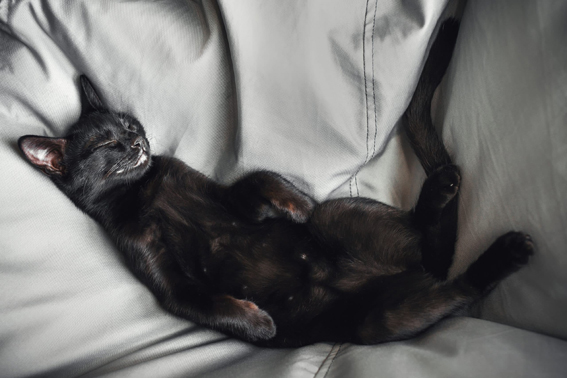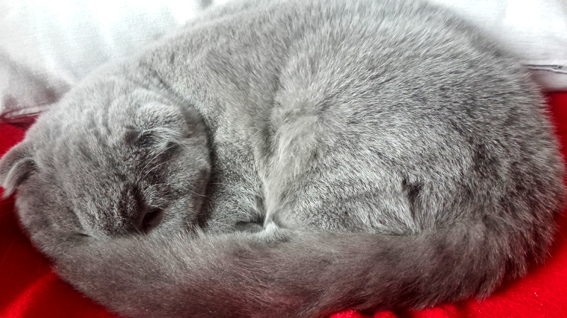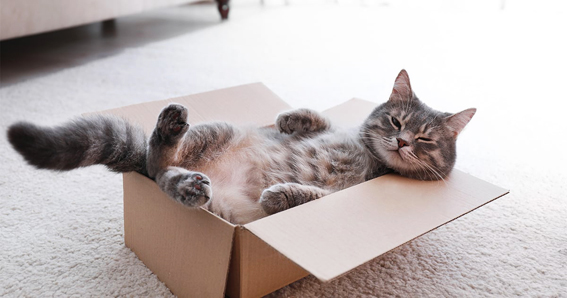THE MEANING OF THE THOUSAND SHAPES OF THE SLEEPING CAT
- Details
- Category: Feline news
- Hits: 636

The positions assumed by cats during sleep can have different meanings. However, it is important to remember that everyone has their own individuality and that positions can vary from cat to cat. Here are some of the most common sleeping positions cats assume and some possible meanings:
1. Ball position: The cat curls up, wrapping its tail around its body. This position may indicate that the cat feels safe and secure.

2. Lateral position: The cat lies on its side with its paws outstretched. This position indicates that the cat is relaxed and comfortable in its environment.

3. Stomach-up position: The cat lies on its back with its tummy facing up. This position indicates great trust in one's environment, as the cat shows the most vulnerable part of its body. Some cats may even invite you to cuddle or caress.

4. Guard Position: The cat falls asleep but keeps its head up and its ears listening. This position indicates that the cat is in a state of alertness and can wake up easily if it senses danger.

5. Crouched Position: The cat lies on its side with its paws tucked under its body. This position may indicate that the cat is resting but still ready to move quickly if needed.
It's important to note that sleeping positions can also depend on your cat's comfort level, ambient temperature, and individual preferences. By observing your cat's general behavior and taking into account the context, you will be able to better understand its emotional state and the meaning of its sleeping positions.
They can also provide some indication of their state of relaxation or comfort, but they are not a reliable indicator to identify a specific malaise in the cat. However, it is strictly necessary to note if the cat assumes unusual positions which denote a change in behavior such as sleeping crouched with the head pressed on the ground or contracted and tense. In this case it is necessary to take him to visit your trusted veterinarian.
Instead there are many elements to consider when trying to understand if a cat is not feeling well.
If you notice a change in your cat's behavior, appetite, energy or weight, it's important to see a veterinarian for a thorough health assessment. Veterinarians are experts in diagnosing and treating diseases and conditions that can affect the well-being of cats.
Some signs of malaise or discomfort in cats include:
1. Changes in Appetite: If your cat shows a decrease or loss of appetite, it could indicate a health problem.
2. Behavioral Changes: If your cat suddenly becomes less active, irritable, withdrawn or exhibits other significant behavioral changes, it could be a sign of malaise.
3. Changes in toilet function: Difficulty or changes in defecation or urination habits can be indicative of health problems.
4. Weight loss or weight gain: Significant changes in your cat's weight can be a sign of underlying health problems.
5. Obvious physical symptoms: These may include wounds, swelling, lameness, rash, vomiting, diarrhea, coughing or sneezing.
A vet will be able to examine your cat, ask questions about its health and conduct diagnostic tests, if necessary, to determine the cause of the symptoms and provide the proper treatment.
Remember that each cat is a unique individual and their expressions and signals may vary. If you have concerns about your cat's well-being, consulting a veterinary professional is always your best bet for an accurate diagnosis and appropriate treatment.












